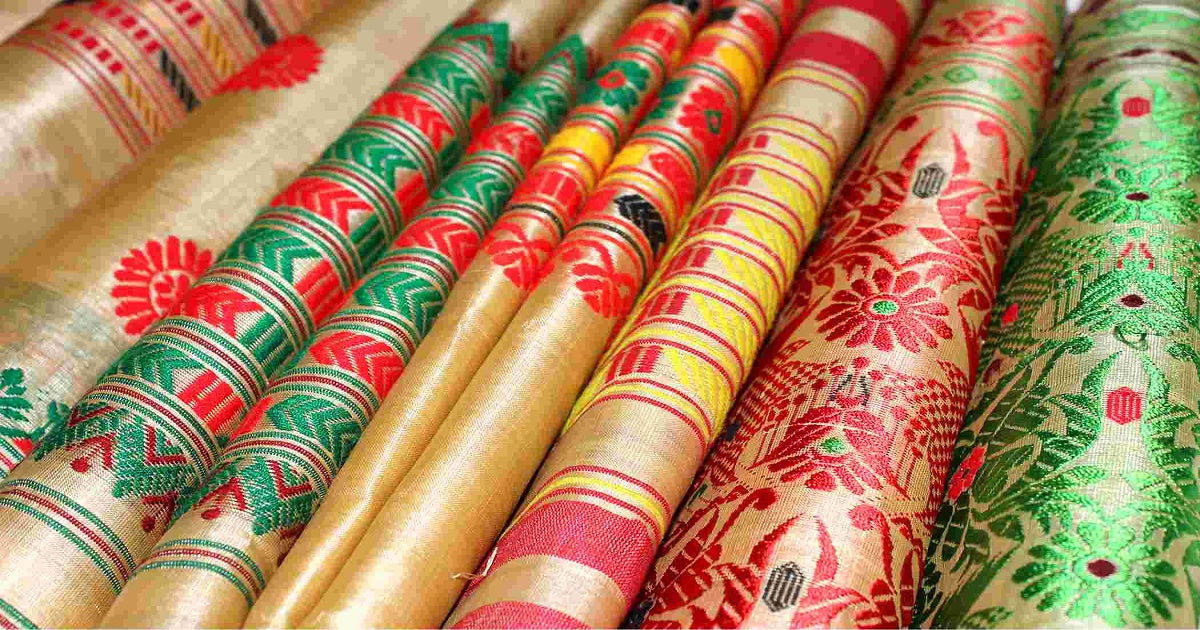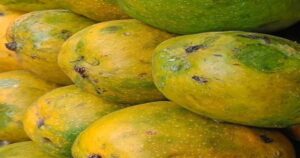Introduction to Muga Silk
Have you ever wondered about a fabric that gleams with a natural golden hue and boasts unparalleled durability? Welcome to the world of Muga Silk! This unique silk, rooted in the rich cultural tapestry of Assam, India, has a history as fascinating as its appearance.
What is Muga Silk?
Muga Silk is a type of silk produced by the larvae of the Assam silkmoth, Antheraea assamensis. Unlike other silks, Muga Silk is renowned for its natural golden-yellow hue and its ability to shine brighter with each wash, making it a symbol of opulence and tradition.
Historical Background
Muga Silk’s history dates back to ancient times, where it was exclusively worn by royalty and aristocrats. Its production has been an integral part of Assamese culture, with techniques passed down through generations.
Origins and Cultural Significance
Geographical Roots
Muga Silk is indigenous to Assam, a state in northeastern India. The unique climate and vegetation of Assam provide the perfect environment for the Antheraea assamensis silkmoth, which is essential for Muga Silk production.
Cultural Importance in Assam
In Assam, Muga Silk is more than just a fabric—it’s a cultural heritage. It plays a vital role in traditional ceremonies and festivals. Garments made from Muga Silk, such as Mekhela Chador and Gamosa, are cherished heirlooms.
Production Process
Silk Farming
The journey of Muga Silk begins with sericulture, the farming of silkworms. The Antheraea assamensis silkworms are reared on Som and Soalu plants, which are native to Assam. The process is meticulous, requiring constant care and monitoring.
Weaving Techniques
Once the silkworms spin their golden cocoons, these are harvested and boiled to extract the silk fibers. The weaving of Muga Silk is an art form, often done on traditional handlooms, ensuring each piece is unique.
Dyeing Process
While Muga Silk is prized for its natural color, it can also be dyed to create various hues. However, the traditional preference is to retain its golden sheen, which is achieved without any artificial dyes.
Unique Characteristics of Muga Silk
Natural Gold Color
The most striking feature of Muga Silk is its natural golden color, which is not found in any other type of silk. This unique attribute gives it a regal and timeless appeal.
Durability and Lustre
Muga Silk is incredibly durable and resilient. Unlike other silks, it does not lose its shine with washing; instead, it becomes more lustrous over time.
Texture and Feel
Muga Silk has a distinct texture—it’s slightly coarse but becomes softer with each wash. Its rich feel and heavy drape make it a favorite for traditional attire.
Economic Impact
Contribution to Local Economy
Muga Silk production is a significant economic activity in Assam. It supports thousands of families involved in sericulture and weaving, contributing substantially to the local economy.
Employment Opportunities
From farmers to weavers, the Muga Silk industry provides employment to a vast number of people, ensuring a livelihood for many in rural Assam.
Environmental Impact
Eco-Friendly Production
Muga Silk production is environmentally friendly. The farming of silkworms and the traditional methods of weaving are sustainable practices that do not harm the ecosystem.
Sustainability
The entire process of Muga Silk production, from rearing silkworms to weaving, is sustainable. The use of natural resources and minimal chemicals makes it an eco-conscious choice.
Uses of Muga Silk
Traditional Attire
In Assam, Muga Silk is most commonly used in traditional garments like Mekhela Chador and Sarees. These are often worn during festivals, weddings, and other significant events.
Modern Fashion
Designers today are incorporating Muga Silk into modern fashion. Its luxurious texture and unique sheen make it perfect for contemporary dresses, scarves, and accessories.
Other Applications
Beyond clothing, Muga Silk is used in home décor items like curtains and cushion covers, showcasing its versatility.
Muga Silk in Fashion Industry
Designers and Collections
Many renowned designers are now featuring Muga Silk in their collections, blending traditional craftsmanship with modern aesthetics.
Global Reach
Muga Silk has crossed borders, gaining appreciation in international markets for its unique qualities and sustainable production methods.
Challenges in Muga Silk Production
Climate Change
One of the biggest challenges facing Muga Silk production is climate change. The silkworms are highly sensitive to environmental changes, which can affect their growth and silk quality.
Industrialization
The spread of industrial activities in Assam poses a threat to the natural habitats of the silkworms, impacting the availability of the plants they feed on.
Government and NGO Initiatives
Support Programs
The Indian government and various NGOs are actively supporting Muga Silk production through subsidies, training programs, and marketing initiatives to help sustain this traditional craft.
Development Projects
Several projects aim to improve the quality of Muga Silk, enhance production techniques, and promote it globally.
Future Prospects of Muga Silk
Innovations in Production
Researchers and craftsmen are constantly working on innovations to make Muga Silk production more efficient and sustainable, ensuring its future viability.
Market Expansion
With increasing awareness about sustainable fashion, the market for Muga Silk is expanding. Efforts are being made to introduce it to new markets and demographics.
How to Identify Authentic Muga Silk
Key Features
Authentic Muga Silk has a natural golden hue, a slightly coarse texture that softens over time, and a unique lustre that increases with washing.
Tips for Buyers
When buying Muga Silk, look for its distinctive golden color, test its texture, and check for the traditional weaving patterns typical of Assamese craftsmanship.
Care and Maintenance of Muga Silk
Cleaning Tips
Muga Silk should be dry cleaned or gently hand washed with mild detergent. Avoid wringing or twisting the fabric.
Storage Guidelines
Store Muga Silk in a cool, dry place. Use breathable fabric covers to protect it from moisture and pests.
Comparing Muga Silk with Other Silks
Muga vs. Mulberry Silk
Muga Silk is more durable and has a natural golden color, while Mulberry Silk is softer and usually white or off-white. Muga Silk’s lustre increases with washing, unlike Mulberry Silk.
Muga vs. Tussar Silk
Tussar Silk has a dull gold sheen and is less durable compared to Muga Silk. Muga Silk’s natural golden hue and durability make it more luxurious.
Conclusion
Muga Silk, with its rich history, unique characteristics, and cultural significance, is truly a gem of Assam. Its sustainable production and luxurious appeal make it a prized possession for anyone who values tradition and quality.
FAQs
What makes Muga Silk unique?
Muga Silk is unique due to its natural golden color, durability, and increasing lustre with washing.
How is Muga Silk different from other types of silk?
Muga Silk is more durable, has a unique natural golden hue, and its lustre increases over time, unlike other silks.
Where can I buy authentic Muga Silk?
Authentic Muga Silk can be purchased from trusted Assamese silk stores, online platforms specializing in traditional textiles, and certified handloom cooperatives.





















